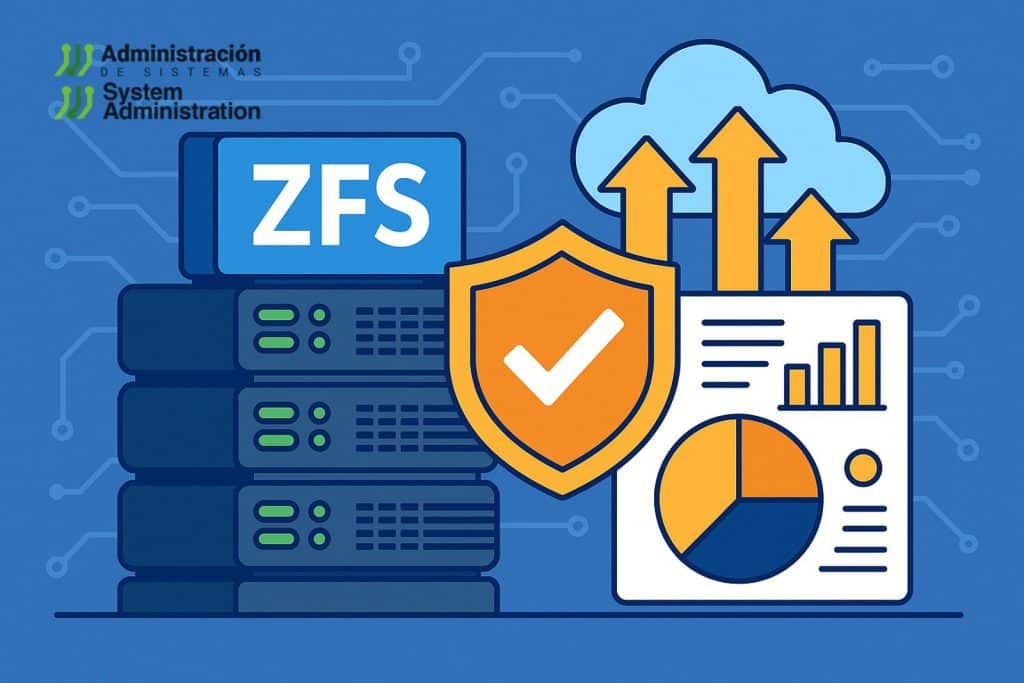In a data-centric world, where enterprise competitiveness depends on the reliability, scalability, and security of information systems, having the right storage architecture is a game-changer. ZFS (Zettabyte File System), originally developed by Sun Microsystems in the early 2000s, has emerged as a powerful solution for businesses seeking long-term performance, operational integrity, and simplified management.
This article explores the technical architecture of ZFS, its core features, and how it supports real-world enterprise use cases across diverse sectors such as finance, healthcare, media, and research.
ZFS: A File System Engineered for the Future
Unlike traditional file systems that separate file system logic and volume management, ZFS integrates both into a unified storage solution. Its 128-bit architecture allows for storage limits measured in zettabytes (10^21 bytes), ensuring future-proof scalability.
ZFS supports:
- Up to 256 quadrillion zettabytes of storage
- 2^64 snapshots and clones per dataset
- Virtually unlimited file and directory sizes
Its core innovations include:
- Copy-on-Write (CoW): No data is overwritten in place, which prevents corruption during system crashes.
- Transactional writes: Ensures consistency and atomicity of data operations.
- Integrated checksumming: Every block has a checksum stored separately, and every read verifies integrity.
Core Technical Features Benefiting Enterprises
1. End-to-End Data Integrity
ZFS detects and corrects silent data corruption (bit rot) using checksums on both data and metadata. The system automatically repairs faulty blocks if redundancy (e.g., mirror or RAIDZ) is configured.
Business implication: Essential for industries like healthcare or legal services, where data integrity is mission-critical and regulatory compliance is mandatory.
2. Advanced Storage Pooling with ARC and L2ARC
ZFS uses a pooled storage model where disks are grouped into virtual devices (vdevs) within a zpool. It also employs:
- ARC (Adaptive Replacement Cache): RAM-based read cache
- L2ARC (Level 2 ARC): Secondary read cache on fast SSDs
These layers deliver ultra-fast access to frequently used data without hitting slow disk storage.
Technical benefit: Improved IOPS for workloads such as virtual machines, database queries, and analytics engines.
3. RAIDZ: Beyond Traditional RAID
ZFS offers software-defined parity protection via RAIDZ1, RAIDZ2, and RAIDZ3, comparable to RAID 5/6 but without the write-hole issues.
- RAIDZ1: One disk parity
- RAIDZ2: Two disk parity (recommended for enterprise)
- RAIDZ3: Three disk parity (used for archival and high-availability setups)
Strategic impact: Reduces risk of data loss during rebuilds and lowers cost compared to hardware RAID.
4. Efficient Snapshots and Clones
ZFS enables space-efficient, instantaneous snapshots that can be scheduled or triggered automatically. Writable clones derived from snapshots allow for testing and staging environments without duplicating data.
Use cases:
- CI/CD pipelines
- System rollback after patching
- Version control for large datasets
5. Inline Compression and Deduplication
ZFS supports inline compression algorithms (LZ4, gzip) that significantly reduce storage footprint. Deduplication eliminates redundant blocks at the block level.
Best practices:
- Use compression widely (low CPU impact with LZ4)
- Use deduplication only on datasets with high redundancy (due to RAM overhead)
6. Replication and Disaster Recovery
Using zfs send and zfs receive, ZFS supports block-level, incremental replication across remote systems with minimal bandwidth usage. These replications are ideal for DR sites and multi-location synchronization.
Example:
zfs send -i snapshotA pool/data@snapshotB | ssh backupserver zfs receive backup/data
Deployment Strategies
ZFS is compatible with major platforms:
- Linux (ZoL/OpenZFS): Native integration with Ubuntu, Debian, RHEL
- FreeBSD: Includes ZFS in the base system
- TrueNAS Core/Scale: Turnkey NAS with GUI
- SmartOS/Illumos: Enterprise-scale deployments
Hardware recommendations:
- ECC RAM: ZFS relies heavily on RAM for caching and metadata
- SSDs for SLOG (ZIL log) and L2ARC
- Redundant power supplies and dual NICs for HA setups
Enterprise Use Cases
Financial Institutions
- Regulatory-grade data retention
- ZFS send/receive for offsite compliance backups
Media & Post-Production
- Real-time editing of 4K/8K video footage
- Snapshots during ingest to prevent loss
Medical & Life Sciences
- Genomic sequencing data storage
- ZFS encryption and audit trails for HIPAA/GDPR compliance
Cloud and DevOps
- VM templating with clones
- Data versioning across environments
Monitoring and Maintenance
Use tools like:
zpool status,zpool iostat,zfs list- Prometheus + Grafana ZFS exporters
- SMART monitoring + proactive scrubbing (
zpool scrub)
Final Takeaway
ZFS offers a unique combination of features unmatched by traditional file systems or third-party RAID solutions. Its self-healing nature, robust snapshotting, and scalability make it a foundation for next-generation enterprise infrastructures.
Companies looking to optimize data resilience, streamline operations, and reduce TCO (Total Cost of Ownership) should seriously consider ZFS as a long-term strategic investment.

